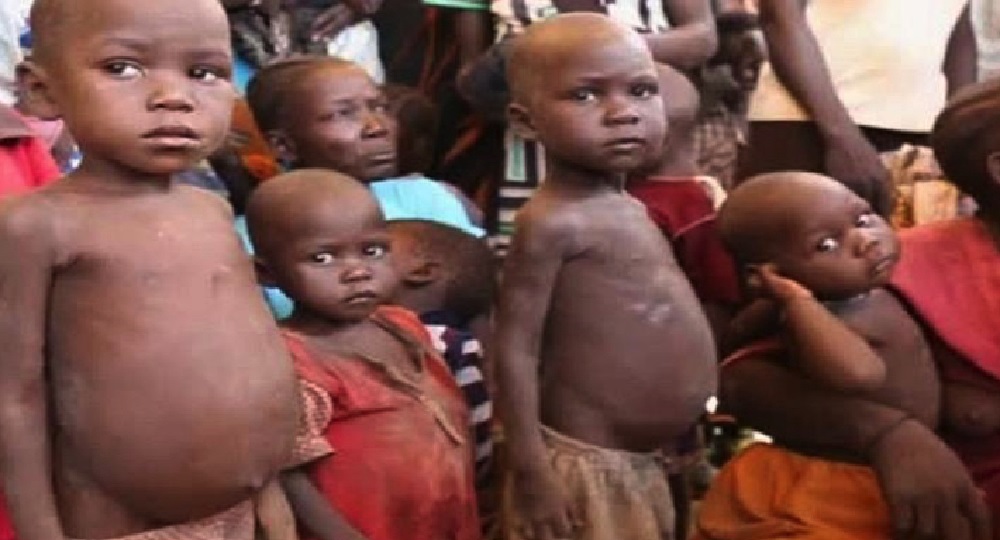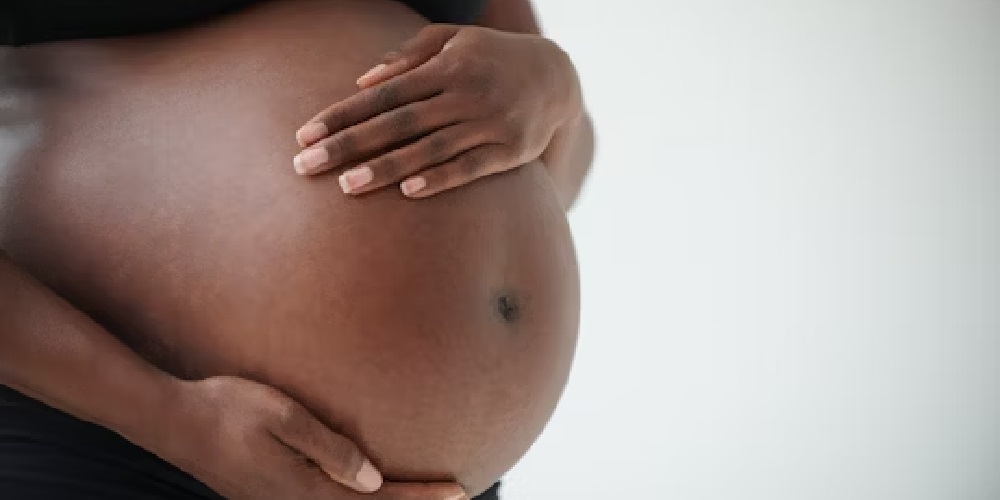Health
FG to employ 28,000 health workers affected by USAID freeze

The Federal Government has announced plans to retain 28,000 health workers whose salaries were previously covered by the United States Agency for International Development (USAID), whose activities have been halted by US President Donald Trump.
Nigeria’s Coordinating Minister of Health and Social Welfare, Muhammad Pate, while speaking on Channels Television’s Hard Copy programme, on Friday, announced that the government is working to absorb the health workers into the country’s healthcare system and reduce reliance on foreign aid.
Mr Pate acknowledged the significant contribution of the US government to Nigeria’s healthcare sector, particularly in the areas of HIV, Tuberculosis, and Malaria.
He, however, emphasised that Nigeria is determined to take ownership of its healthcare sector and reduce its dependence on external aid.
“There are health workers, 28,000 of them, who were being paid through US government support. While it has been appreciated, those health workers are Nigerians. We have to find ways to transit them,” he said.
Apart from suspending the USAID which supports healthcare and other development activities across the world, President Trump has also halted the President’s Emergency Plan for AIDS Relief (PEPFAR), which supports the global fight against HIV/AIDS.
Following his inauguration on 20 January, President Trump signed multiple executive orders affecting global health funding and significantly impacting developing countries like Nigeria that rely on US assistance for health financing.
Mr Trump signed an order to halt the disbursement of foreign aid to any country for three months. The implementation of this order halted the US global health efforts, including PEPFAR, in low and middle-income countries around the world.
Although PEPFAR was issued a limited waiver a week later, allowing it to restart some services, the situation has remained fluid. PEPFAR is a major programme through which HIV interventions in Nigeria are funded.
The situation was also worsened by the US government’s decision to suspend USAID’s activities. The agency implements many US health programmes in Nigeria and other developing countries.
All USAID interventions in Nigeria and across the world have been suspended with the American president’s team, led by billionaire Elon Musk, saying they are auditing the agency to check waste and corruption in the system.
To mitigate the impact of the US policy shift, the Nigerian Senate recently allocated an additional N300 billion to the health sector in the 2025 budget. This additional budgetary allocation is expected to take care of the 28,000 health workers, among other issues in the sector.
According to Mr Pate, about 70 per cent of the country’s total health expenditure comes from private sources, including out-of-pocket payments by citizens, while only 30 per cent is publicly financed.
“Our total health spends in Nigeria, the total health expenditure: 30 per cent is public, 70 per cent is private,” he said, emphasising the financial burden on individuals seeking medical care.
While external assistance has played a role in supporting healthcare programmes, the minister noted that it is not the primary source of Nigeria’s health funding.
“The component of overseas development assistance for health is not the largest chunk of our health expenditure,” he stated.
However, the reliance on foreign aid for critical services such as HIV, TB, and malaria has made the country vulnerable to shifts in donor policies, as seen with the recent changes in US government funding.
Mr Pate stressed the need for increased domestic investment in healthcare, citing President Bola Tinubu’s Renewed Hope Agenda, which prioritises human capital development and increased healthcare funding.
He highlighted the government’s recent approval of nearly $1 billion to improve health service delivery across the country.
“We’ve seen deliberate efforts to mobilise resources to invest in health. Just last week, the Federal Executive Council approved almost a billion dollars in terms of financing for the programme. That is a significant resource that states will implement. It’s a programme for results that will deliver better, but it will take time,” he said.
Mr Pate further highlighted that the government is working to address Nigeria’s heavy dependence on imports for its pharmaceutical needs, noting that the country imports the vast majority of its medical supplies.
“Can you believe that more than 70 per cent of our drugs, we import with foreign exchange that we didn’t have? So, if we can flip it over time. 99 per cent of our medical devices, we import them,” he said.
He acknowledged that reversing this trend will not happen overnight but emphasised that the government is committed to changing the trajectory.
He pointed to efforts aimed at increasing local production of essential medical commodities, including antibiotics, as part of a broader strategy to strengthen Nigeria’s healthcare system.
“Now, if we flip that over time, that is not going to take place overnight, but we have to be on that path,” he added.
“Healthcare is not cheap. Quality healthcare is not cheap. You have to invest in it. We as a country had not invested in it, and yet we had been asking for the highest quality health.”
Health
Men who desire healthy children should marry before 40, expert advises

By Francesca Hangeior
Men who wish to father healthy children have been advised to get married and start a family before the age of 40.
The President of the Nigerian Association of Urological Surgeons, Professor Nuhu Dakum, revealed that ageing negatively affects sperm quality, thereby increasing the chances of passing on genetic disorders to offspring.
“Sperm quality reduces with age. The count, motility, and morphology are all adversely affected. Also, there is an increase in damage to the sperm DNA, thus predisposing babies to genetic diseases,” he explained.
The consultant urologist further stated that while the age at which sperm quality varies, “generally it’s more significant from about 40 years of age.”
He attributed factors including “biological changes with age, lifestyle, e.g., smoking and alcohol, unhealthy nutrition, occupational exposure to toxins, etc.”
Dakum’s statement follows a recent viral conversation on X, formerly Twitter, that older men have weak sperm.
The tweet by Queen read, “Older men are more likely to give you children with genetic mutations like dwarfism, autism, Down syndrome, and schizophrenia.
“Their weak sperm has a higher risk of causing mutations in kids. Try your best not to have kids with their sperm.”
According to the Texas Fertility Centre, sperm quality and quantity decline over time, leading to age-related male infertility.
However, Healthline, a health portal, pointed out that sperm quality declines significantly in men over the age of 50, with factors such as sperm count and lifestyle habits being responsible for the deterioration.
Speaking further, Dakum stated that older men who desired to have healthy children could do so if they maintained good sperm health, noting that living healthily improves life generally and thus sperm health.
He added, “There may not be much to prevent it if the man is already old, but living healthy improves general and thus sperm health. However, genetic selection in the embryo or sperm checks for sperm damage can be done to reduce the chances, but these are expensive and not widely available. Donor sperm for such couples is also an alternative.”
Health
Stop patronising untrained birth attendants, LASG warns pregnant women

By Francesca Hangeior
The Special Adviser to the Lagos State Governor on Health, Dr. Kemi Ogunyemi, has cautioned residents against patronising untrained birth attendants.
Ogunyemi gave the warning during a medical outreach organised by the Simisola Alabi Foundation, an initiative focused on enhancing maternal and child health across Lagos State.
Speaking during the medical outreach held on Saturday in the Obalende area of Lagos, the Special Adviser to the Governor on Health, Kemi Ogunyemi, said, “Maternal deaths happen too often because women avoid hospitals.
“Health insurance removes the financial barrier to quality care.”
She reaffirmed the state government’s commitment to making healthcare both affordable and accessible through the expansion of its health insurance programmes.
Beyond maternal care, Ogunyemi noted that the outreach served as a vital opportunity to address other pressing public health concerns.
“Many in this community didn’t know about the diphtheria outbreak. Education saves lives, and this event provided a perfect setting to share crucial health information,” Ogunyemi added.
Ogunyemi also called on men to play an active role in promoting family health, emphasising that healthcare decisions are a shared responsibility.
“Whether it’s health insurance or family planning, it’s a shared responsibility. Men must not be bystanders,” she said.
Earlier, the founder of the Simisola Alabi Foundation, Simisola Alabi, shared the inspiration behind the outreach, stressing the transformative impact of community support.
“It’s not because I have so much money; it’s because I understand the power of giving. Helping one mother today could uplift an entire generation tomorrow,” Alabi explained.
She pointed out that the programme placed particular focus on tackling stunting, a major but often overlooked issue affecting children’s physical and cognitive development.
“Stunting affects not just height but brain development and life outcomes. By empowering mothers today, we’re shaping a better future for our children,” she noted.
Alabi also urged corporate organisations and individuals to direct their social responsibility efforts to underserved communities.
“The real heartbeat of Lagos is in communities like Obalende, not just the affluent neighbourhoods. Channel your CSR here where it truly matters,” she said.
Health
Uncontrolled diabetes in pregnancy may lead to cataracts in children – Ophthalmologists

By Francesca Hangeior
Contrary to the belief that cataracts mainly occur in older adults, eye specialists say babies and children could be born with it or develop the eye disease due to certain health conditions.
The ophthalmologists said pregnant women with uncontrolled diabetes and other metabolic diseases might give birth to babies with cataracts, though there were other causes of congenital cataracts in children.
The experts said it was important for pregnant women to have good antenatal care to reduce the risk of pregnancy complications that could affect the eyes of their babies when they are born.
Besides diabetes in pregnancy, the ophthalmologists also disclosed that certain infections in pregnancy like rubella (German measles) can lead to a woman giving birth to a child with cataracts while advising teenage girls to go for rubella vaccination.
They noted that cataracts in children could either be by birth (congenital) or acquired after birth, warning that an injury to the eye could cause cataracts in children.
However, the physicians who spoke during an exclusive interview with PUNCH Healthwise, said not all cataracts in babies and children had a known cause.
The World Health Organisation says cataract is a clouding of the lens in the eye that normally affects vision, stressing that cataract is the most common cause of blindness and visual impairment often related to aging.
The global body, however, said, “Occasionally children are born with the condition, or a cataract may develop following an eye injury, or as a result of inflammation or other diseases, such glaucoma and diabetes. Sometimes, the development of cataracts is linked to steroid use or it may develop after exposure to some types of radiation.”
Speaking with our correspondent, a paediatric ophthalmologist, Dr. Halima Alimi, also disclosed that some cataracts in children could also be hereditary, assuring that children with significant cataracts could be effectively treated by surgery.
The eye expert, who is the Executive Director of Restore Foundation for Child Sight, a non-government organisation that advocates for improved eye care for children, said parents should ensure that their babies go for routine eye checks after six months of birth to detect the condition early before it negatively impacts on the overall growth and development of the child.
Giving insight into why children also suffer from cataracts like older people, Alimi explained, “Why children suffer cataracts is because of the variety of things that potentially upset the clarity of the lens of a child’s eye and so we have said that it can be congenital or acquired.
“Part of the congenital causes of cataracts are children whose mothers suffer certain infections while they are pregnant with them which we call intrauterine infections. Most of them are viruses and so there are a host of diseases that pregnant mothers can have. Top on the list is something called rubella. It is a German measles.
“It is a sort of measles but a little bit different from the popular measles that is known. It is caused by the rubella virus. So when a pregnant woman is affected by German measles, the virus will go ahead to cross the placenta and infect the baby depending on the stage of the pregnancy at which it infects the baby.
“If it is in the early stage of the pregnancy when the eyes are still developing, it can cause congenital cataracts as well as other problems that the child may be born with.
“This is one of the most common causes of infective cataracts in children born with it. And then also children whose mothers have certain metabolic diseases such as uncontrolled diabetes, the children themselves if they are born diabetic and other metabolic diseases, can cause cataracts as well. “
According to an international non-governmental organisation that works with partners in developing countries to treat and prevent avoidable blindness, Sightsavers, cataracts are one of the leading causes of visual impairment and blindness in children.
Alimi also pointed out that there are a variety of other causes of cataracts in children that are not congenital but are acquired.
“Things like injury. We all know that children can suffer eye injury from moderate to severe. So if an injury is severe enough it can result in cataracts just by having an injury. Injury is the cause of cataracts occurring in one eye in children. Inflammation inside the eye can lead to cataracts in children if not handled effectively. That is why we discourage self-medication”, she said.
The ophthalmologist also said genetically inherited diseases and indiscriminate use of steroids can cause cataracts in children.
On signs of cataracts in children, Alimi identified delayed milestones such as sitting, social smile, walking, and standing as some of the early indications, urging patients to establish the habits of routine and annual eye checks for their children..
According to her, squinting during bright light, a white dot within the eye, abnormal movement of the eye, not focusing when looking, and squinting the eyelids when there is sunlight are also some of the signs of cataracts i.n children
Commenting on the treatment, the eye specialist said cataracts when they are significant are treated surgically, adding also that vision rehabilitation for the children after the surgery will enable them know how to use their spectacles and how to maintain good eyesight.
She said cataracts in children could be prevented through immunisation in pregnancy, optimal antenatal care, prevention of injury, avoidance of drug abuse, vaccination of teenage girls against rubella.
A Consultant Ophthalmic Surgeon, Dr. Folasade Fasina, told PUNCH Healthwise that cataract is the most common cause of blindness in Nigeria.
The ophthalmologist disclosed that cataract is treated by the removal of the cloudy lens, adding that this is replaced with a clear artificial lens.
She stressed that the removal can only be done through surgery.
Fasina explained, “There are various methods of removal but all are surgical.
“Diagnosis is made when a doctor, an eye specialist, examines and carries out some tests on a patient complaining of blurred vision.
“Cataract is treated by an ophthalmologist who performs surgery on the eye. When the cataract is still small, vision can be improved with prescribed glasses, but the definitive treatment is surgery.”
In a 2021 study published in ScienceDaily, researchers from Denmark found that mothers who have diabetes before or during their pregnancy are more likely to have children who go on to develop eye problems.
The researchers analysed the associations between maternal diabetes before or during pregnancy and the risk of high refractive error, conditions in which there is a failure of the eye to properly focus images on the retina.
They advise that early screening for eye disorders in the children of mothers with diabetes may play an important role in maintaining good eyesight health.
-

 Opinion6 hours ago
Opinion6 hours agoRIVERS, WIKE, FUBARA, AND THE WAY FORWARD
-

 Politics5 hours ago
Politics5 hours agoJust in: Delta PDP Reps members defect to APC
-

 News16 hours ago
News16 hours agoMinistry denies awarding N13bn contracts without due process
-

 News16 hours ago
News16 hours agoFULL STEPS: How to check 2025 JAMB results
-

 News10 hours ago
News10 hours agoVDM may be released on Tuesday
-

 News16 hours ago
News16 hours agoCourt halts Abuja multi-million naira market project
-

 News7 hours ago
News7 hours agoCourt bans Nnamdi Kanu’s in-law from 3 proceedings over live streaming
-

 News7 hours ago
News7 hours agoNANS Barricades Lagos-Ibadan Expressway Over Alleged NELFUND Mismanagement

















